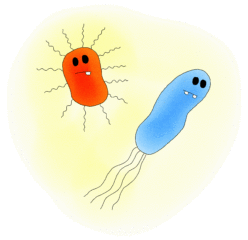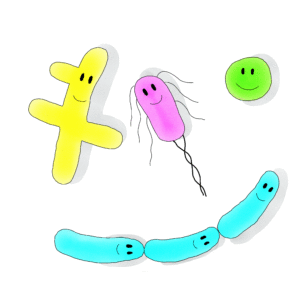Then let me explain germs to you:
They are tiny life forms so small that you usually cannot see them without some technical help, such as a microscope, or an electron microscope. Some of them you can also make visible by growing them in special growth media – You will then not see individual germs, but germ colonies. This usually works with bacteria and fungi – which brings me to the different kinds of germs:
There are four known kinds of germs
But before I introduce them to you let me make something clear up front. Usually, we say “germs” just to the microorganisms that can harm us. However, I am using the word “germs” with a much broader meaning, because I want to show to you that there are so many microorganisms that help us and the environment – Many more than there are bad “germs”!
With that out of the way let’s begin:
Bacteria
Bacteria are single-celled organisms that live almost anywhere on earth. Scientists estimated that there are up to a trillion different kinds and overall about two nonillions of them sharing this planet with us. They come in various shapes and forms and can do many interesting things. Some can make us sick, but many of them are vital for our health and survival and the environment. If you want to find out more about them, click on the picture.
Viruses
Viruses are even tinier than bacteria. So you would usually need a special instrument, called electron microscope, to see them. Viruses are the only group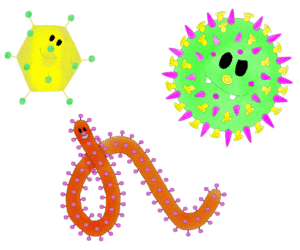 of germs that cannot survive on their own. They need some other life form, such as a plant or an animal to reproduce, grow and spread. Some viruses even infect bacteria. Those viruses are called bacteriophages. While most viruses are harmful to us, we have found ways to use some of them to help us treat and prevent illnesses. To learn more about them, click on the picture.
of germs that cannot survive on their own. They need some other life form, such as a plant or an animal to reproduce, grow and spread. Some viruses even infect bacteria. Those viruses are called bacteriophages. While most viruses are harmful to us, we have found ways to use some of them to help us treat and prevent illnesses. To learn more about them, click on the picture.
Fungi
When you hear about fungi you probably just think about something like the mushroom shown on the picture to the right. Howeve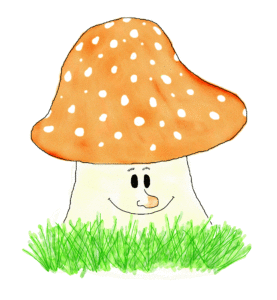 r, fungi are much more than mushrooms. In fact, what we commonly call a mushroom is just some way of reproduction for some kinds of fungi. Fungi usually are bigger than bacteria. Still they can be tiny. But they also can be huge. They can be single-, or multi-celled. Mostly, fungi are harmless to you, unless you have other health problems that weaken you. Also, some fungi can produce potent toxins that can even make an otherwise healthy person very sick. Apart from potentially or actually harmful fungi, many help us produce certain kinds of food or play an important role in the environment. See for yourself what fungi are up to by clicking on the mushroom.
r, fungi are much more than mushrooms. In fact, what we commonly call a mushroom is just some way of reproduction for some kinds of fungi. Fungi usually are bigger than bacteria. Still they can be tiny. But they also can be huge. They can be single-, or multi-celled. Mostly, fungi are harmless to you, unless you have other health problems that weaken you. Also, some fungi can produce potent toxins that can even make an otherwise healthy person very sick. Apart from potentially or actually harmful fungi, many help us produce certain kinds of food or play an important role in the environment. See for yourself what fungi are up to by clicking on the mushroom.
Protozoa
Protozoa are small single-cell organisms that are tradition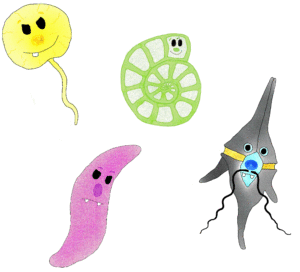 ally looked upon as animals. The name Protozoa literally means: “the first animal”. We can find them in the soil and water. Many also live in animals and plants. Only some of them cause serious illnesses in humans or in animals. Many others play an important role as food for other animals, or in building fertile soil for plants. To learn more about the good and bad protozoa click on their picture.
ally looked upon as animals. The name Protozoa literally means: “the first animal”. We can find them in the soil and water. Many also live in animals and plants. Only some of them cause serious illnesses in humans or in animals. Many others play an important role as food for other animals, or in building fertile soil for plants. To learn more about the good and bad protozoa click on their picture.
Finally, I would like to mention Prions.
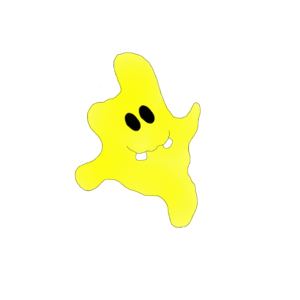
They are not really germs since they are not living beings. There is also nothing good to be said about Prions since they all cause serious disease in animals and humans. Prions are proteins that went crazy making other similar proteins in the brain go crazy as well. They can infect us primarily via food infected by them.
